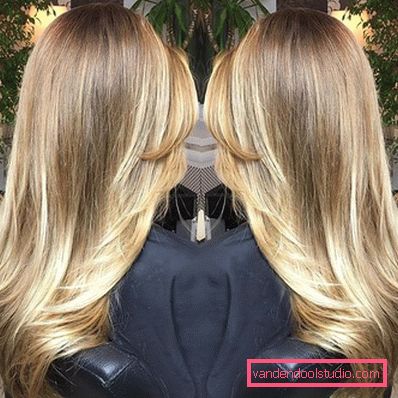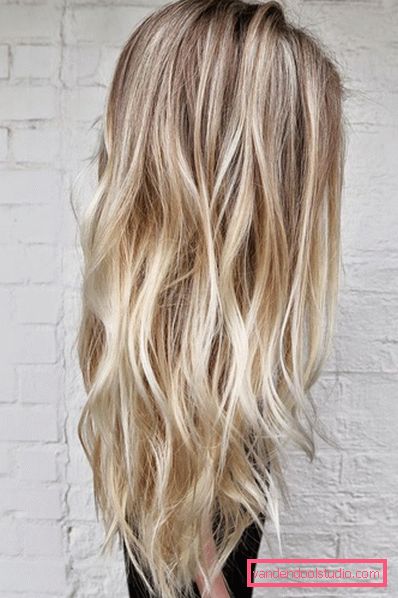Shatush
Shatush - some strands are brightened at the tips (usually not more than half the length). This creates smooth transitions from dark to light, which allows you to simulate the type of burnout in the sun, with particular attention paid to the front strands. Thus, this technique differs from both balayazha and ombra in that only some strands are brightened instead of solid surface clarification.
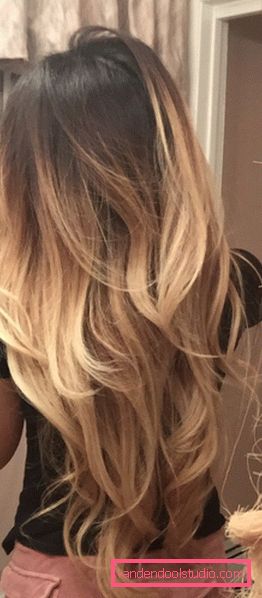
Shatush on dark long hair.
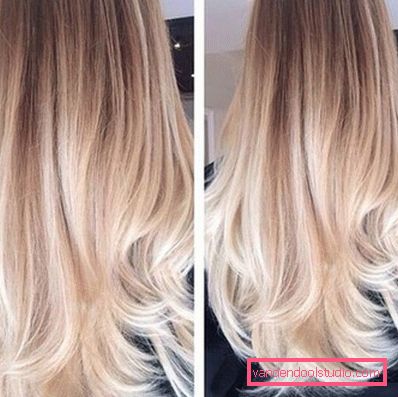
Shatush on light long hair.
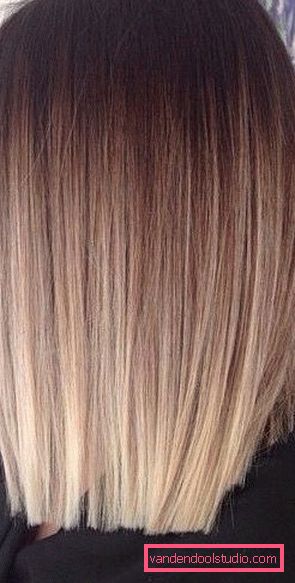
Shatush on the square.
Balayazh - paint is applied to the curls in the area of the tips with surface strokes, while the stylist seems to be brushing. Smears can be V-shaped, parallel strips of different lengths.
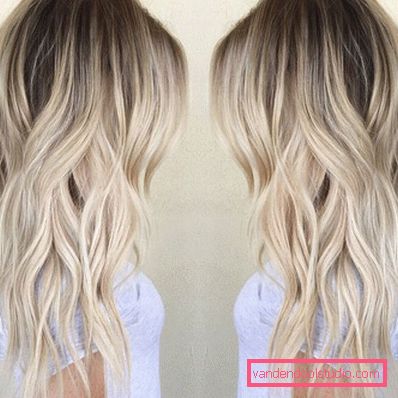
Balayazh on light long hair.
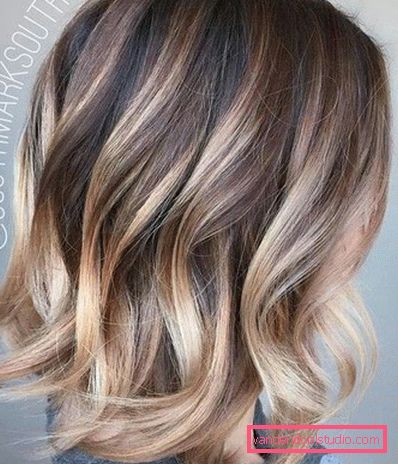
Balajazh on dark hair of medium length.
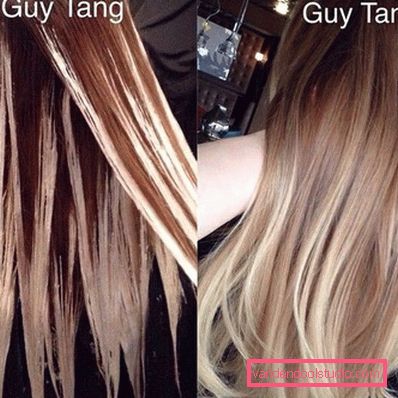
Visible application technique: V-shaped smears.
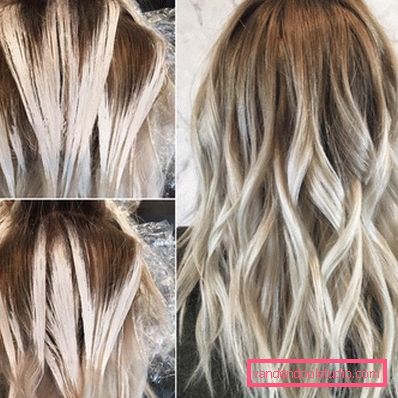
One can see the application technique: parallel strips of different lengths.
Ombre - approximately in the middle of the length of the hair creates a smooth transition from one color to another. Another name for this technique is degrade. Most often the ends are lightened, while the shades are selected that are close to natural. The roots are either left intact, or additionally darkened.
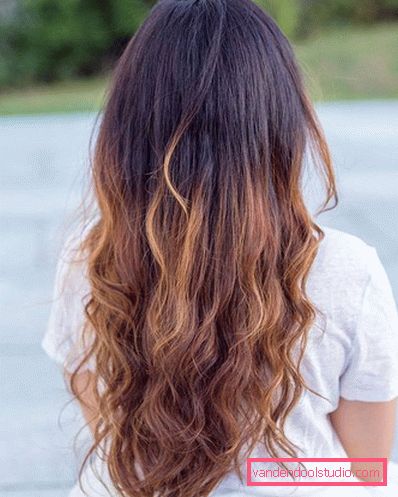
Ombre on dark hair, the transition to several tones.
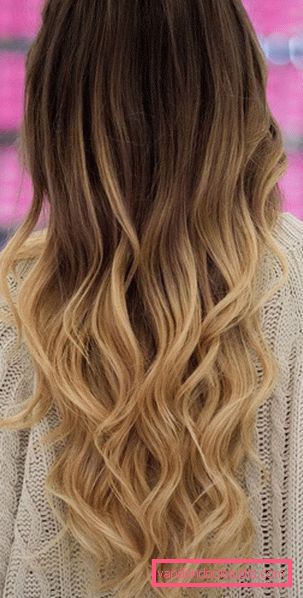
Ombre on dark hair, the transition to light.
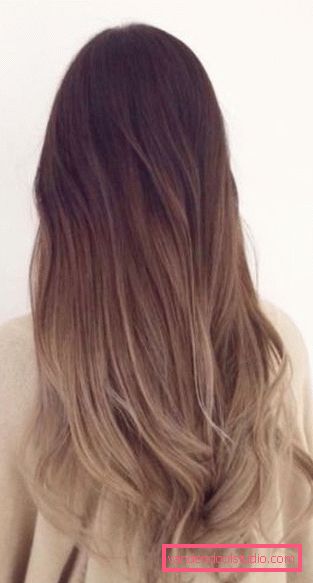
Reservation. Brond (brond) - is a deep, voluminous color with the effect of burnout. This name appeared as a result of the merger of the words brown (brown) and blond (blond, blonde). With this painting technique, gradual transitions between the two tones are created all over the head.
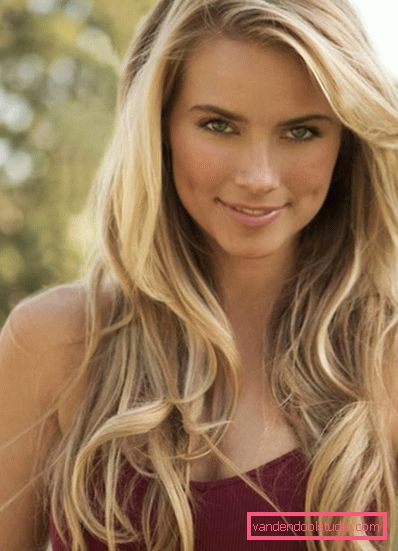
Brondirovanie on long hair. Looks very natural.
